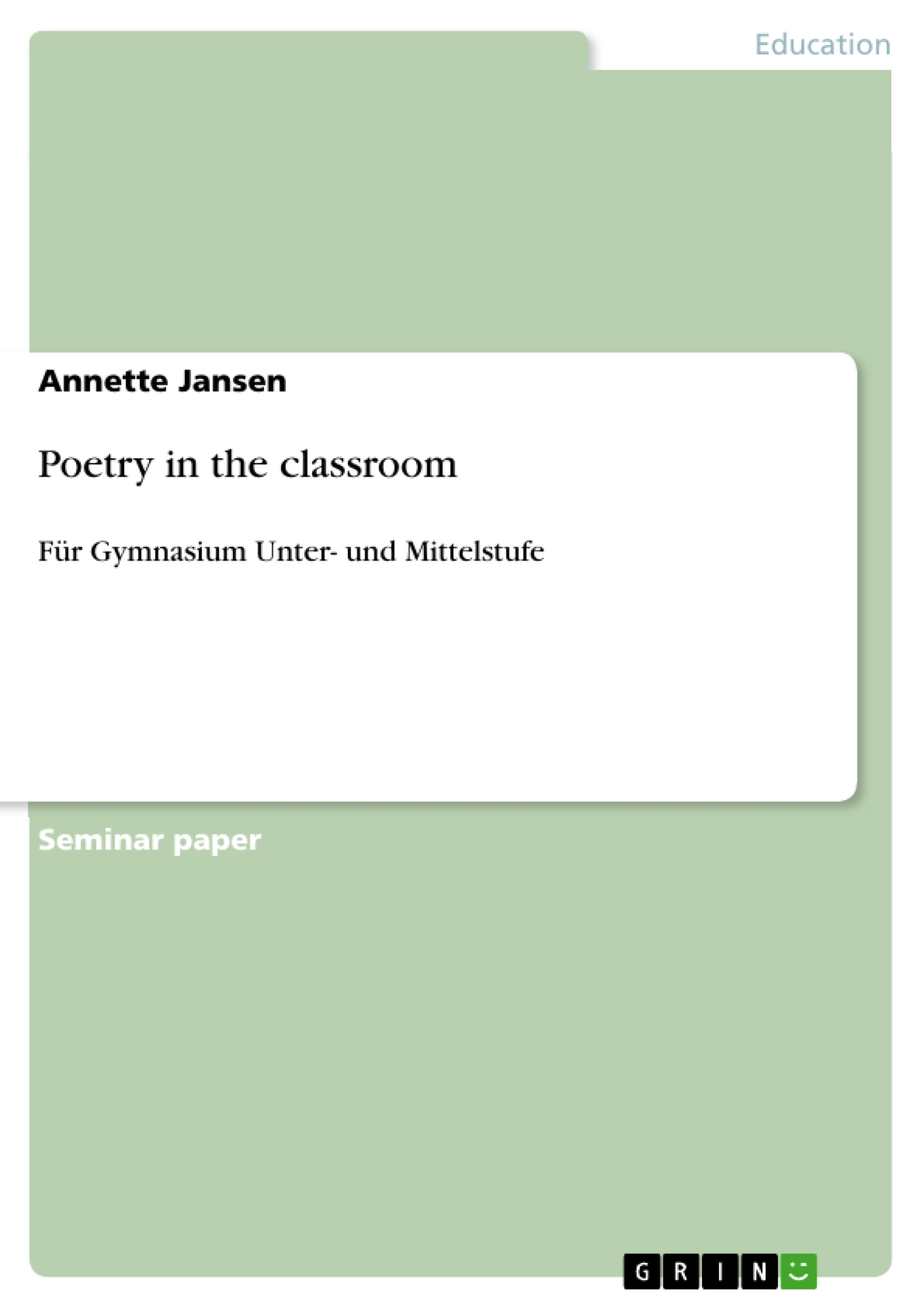In general, poetry seems to be a fairly neglected topic in today’s classrooms.
Reasons for this may be multiple1 and it is probably difficult to determine
universally valid explanations. It does not make a difference whether it is poetry
in the mother tongue or poetry in a foreign language; it just seems that poetry in
general does not seem to be very popular. Skipping through the current
schoolbooks the impression occurs that poetry only plays a subordinate role.
Also, when under time pressure and the necessity to drop certain topics, poetry
seems to be among the first ones to be dropped. The question arises whether this
is due to teachers who never found access to poetry? The extra effort it might
take to prepare for a poetry lesson? Or is it lacking courage to approach a topic
that seems to be unpopular? It is up to teachers to either inspire or discourage
pupils when it comes to poetry. This inspiration or discouragement may last a
lifetime.
Many pupils probably consider poetry as ‘un-cool’. But in the time of events like
literature and poetry slams, which are highly enjoyed by many pupils and
students, it should be worth re-thinking the attitude about poetry and to bring
poetry to the classrooms.
With this paper I would like to show approaches, activities and ideas how
teachers can make poetry more popular in the classroom.
Content
1. Introduction
2. A brief outline about poetry and literature in the curriculum
3. Poetry in the classroom – Why?
4. Poetry in the ‘Unterstufe’
4.1 Exercises & Aims
5. Poetry in the ‘Mittelstufe’
5.1 Exercises & Aims
6. Conclusion
7. Literature



